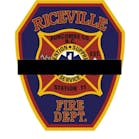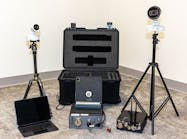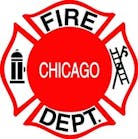Report on 2017 IN LODD: Doctor Evaluations Needed for FFs
Source Firehouse.com News
Medical evaluations and mandatory wellness and fitness programs are needed for firefighters to reduce the risk of heart attacks and avoid sudden cardiac arrest, according to a report's recommendations on the 2017 death of an Indiana fire captain after a training exercise.
A report by the National Institute for Occupational Safety and Health (NIOSH) and the Centers for Disease Control (CDC) released Tuesday centered on the line-of-duty death of Fort Wayne Capt. Eric Balliet. He suffered a fatal heart attack Sept. 27, 2017, following the debriefing for a drill he had participated in.
RELATED:
After NIOSH investigators looked into the circumstances surrounding the captain's death, the agency recommended that firefighters are cleared for duty by a doctor knowledgeable in firefighting's physical demands, PPE and SCBA gear, as well as components of National Fire Protection Association (NFPA) 1582. NIOSH also determined that departments adopt mandatory and comprehensive wellness and fitness program for firefighters as a way to decrease the risk of line-of-duty training deaths associated with cardiac arrest.
According to the report, the 41-year-old firefighter was part of a multi-unit training scenario in an abandoned restaurant that lasted between 20 and 25 minutes. Crews then met for a debriefing.
Once the debriefing was over, Balliet went to the bathroom, and when he returned, he told an on-site paramedic that his arm was numb and he was having chest pressure. The medic and the safety officer—the assistant chief—brought the captain to the fire engine, where they administered oxygen, continued an assessment and called for an ambulance.
Balliet then began feeling dizzy before collapsing, the report stated. An automatic external defibrillator was used to deliver a shock shortly before the ambulance arrived, and advanced life support was performed at the scene.
At the hospital, emergency room staff continued resuscitation efforts for about 20 minutes. But those were unsuccessful, and Balliet was pronounced dead.
An autopsy revealed that the firefighter had died of "intracoronary thrombus (myocardial infarction) due to severe, occlusive arteriosclerotic cardiovascular disease," the report stated. A clot was found in the left anterior descending coronary artery and severe atherosclerosis was discovered in multiple coronary arteries. The heart also had thickened ventricles, was heavier than normal and had microscopic changes found with hypertensive cardiovascular disease.
NIOSH investigators determined that the physical exertion of the training drill triggered the heart attack in Balliet, who had underlying cardiovascular disease.
Go to the National Institute for Occupational Safety and Health's website to read the full report.






